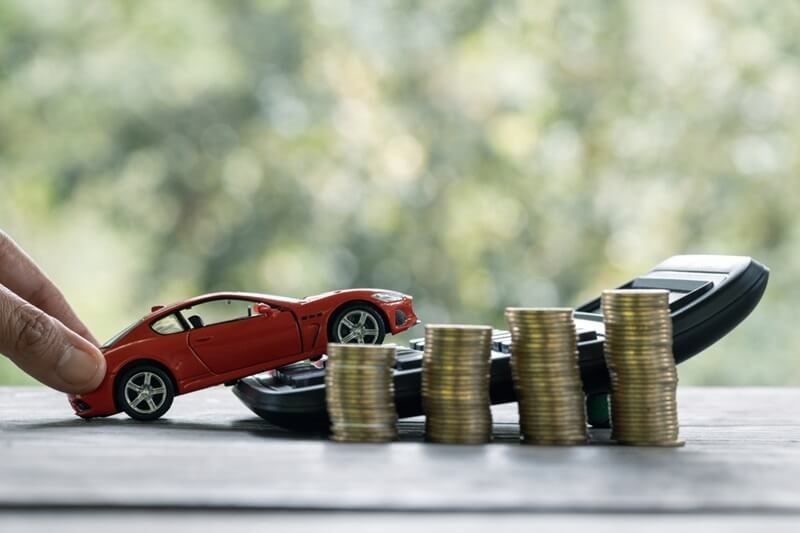
Cars are one of the most essential implements of daily life in America. Whether for errands, driving to work, or cruises, most of us rely heavily on our cars. Along with that reliance, naturally, comes responsibility—and sometimes the worry of getting through unplanned breakdowns. One rushed engine breakdown, brake failure, or transmission breakdown can cost anywhere from hundreds to thousands of dollars. Without prior planning, these unexpected emergency vehicle expenses can destroy your financial well-being.
That is why you have to budget and work on saving for car repairs. In this blog post, we will share practical money advice on how to prepare, deal with, and recover from surprise automobile expenses. If you are setting up a special repair fund or getting smarter when it comes to budgeting, these car repair fund tips will put you in the driver's seat when your automobile dashes your expectations.
The average American driver pays over $1,000 a year for automobile repairs and unexpected maintenance. For older cars, the figure can rise more than double. While preventive measures prevent big issues from arising, the inevitable does. Unlike expected expenses such as gas and insurance, coping with emergency vehicle expenses catches drivers off guard.
To the majority, the surprise $1,200 repair would mean using credit cards, tapping savings, or even skipping some other bills. It's much better if you do not have a plan B.

This is where car repair budgeting and seeking good car repair fund advice come in. Being prepared not only saves your wallet, but it also reduces the tension and stress that otherwise surround these situations.
The perfect solution to pay for surprise car expenses is to set up a special savings account only for car expenses. Call it your "auto emergency fund."
Here are some guidelines for a car repair fund to build it in the right way:
By saving cash on car repairs here and there, you will be stress-free knowing that cash is saved for breakdowns or maintenance.
The majority of people budget for rent, groceries, and utilities, but not for repairs on their car. By including car maintenance and savings as a recurring expense, you'll be better prepared when the inevitable does happen.
This is how you can budget for car fixes:
This small tweak compels you to save for car needs on a regular basis monthly instead of panicking when the breakdowns arrive.
Recognizing normal emergency car costs helps you know how much you need to save. The following are typical costs US drivers have:
Brake replacement: $300–$800
Alternator replacement: $500–$1,000
Transmission repair/rebuild: $1,800–$3,500
Tire replacement (four tires): $400–$1,000
Battery replacement: $100–$250
Having these numbers lets you make reasonable expectations of saving for car repairs. For example, if you own an older car, saving $1,500 per year may be more prudent than the suggested $1,000.
Although breakdowns can never be prevented, preventive maintenance makes sure that the chance of having to go through monstrous checks is negligible. Spending a couple of dollars now can save you hundreds in the long run.
Oil changes and tune-ups: Frequent oil changes save you thousands of dollars in engine wear.
Tire rotations and alignments: These pay for themselves hundreds of dollars in the long run.
Brake inspections: Worn pads addressed before they become an issue cost much less than replacing rotors.
Fluid checks: Transmission or coolant flushes prevent the system from overheating and costly system failure.
Include preventive maintenance in your car repair budget. It might be wise to spend $100 today to save $1,000 in unnecessary car repairs later.
You don't need to send it all off to the shop. Learning some basics of DIY will save you a ton of money and make you feel confident.
Some examples:
These small jobs are worth it, enabling you to save even more using your car repair savings tips plan. And of course, for serious mechanical or electrical repairs, let a professional mechanic fix it to avoid costly errors.
Don't automatically accept the initial estimate when hit with an unexpected bill. Shop around and get quotes.
By being proactive, you’re not just managing surprise auto costs but actively lowering them.
Extended warranties and auto insurance will, at times, reimburse emergency vehicle costs, though only in unusual situations.
Collision/Comprehensive Coverage: In the event of a collision or act of God, your policy will pay for it (less your deductible).
Mechanical Breakdown Insurance: Offered by some agencies, this is like having medical insurance for your vehicle. It will cover expensive repair costs, but at the expense of monthly premiums.
Extended Warranties: These are wonderful for safeguarding yourself from massive mechanical breakdowns but typically won't cover wear-and-tear components like tires and brakes.
Read the fine print to know what is covered and what is not.
When you have not saved enough, there is a tendency to go for credit cards or payday loans. But they can at best increase financial stress.
Credit Cards: That $1,200 fix can cost you $2,000 in the long run if paid in haste.
Payday Loans: Short-term loans might be a quick solution, but their extremely high interest rates can trap you in debt.
It is better to use your car repair fund technique in addition to maintaining a small emergency savings account so you can avoid converting emergency car expenses into long-term financial problems.
And if saving is difficult, you can make a little more on the side with minimal income. Even an additional $100 or so each month from gig economy jobs like food delivery, freelancing, or online tutoring will get your car repair savings plan shifting into high gear. Not only does this cover surprise car costs, but it keeps you healthier on the rest of your personal finance as well.
The biggest benefit of saving money for auto needs is a sense of comfort. Having money put aside, you avoid the stress when your mechanic gives you an estimate. Instead of worrying, "How am I going to pay for this?", you'll be able to calmly draw on your car repair funds. Being prepared is less stress, less cash out, and the convenience of having your vehicle on the road without jeopardizing the rest of your life.
Cars do break down—it's not a matter of "if," but "when." By prioritizing saving money for auto needs as your number one goal, sticking with a particular fund, and retaining a decent budget for car fixes, you can pay even the biggest surprise car bills without putting your financial security into a spin.
Heed these auto repair cost-saving tips, observe preventive maintenance, and avoid debt snares. Effective planning will help you to be well-equipped for emergency vehicle expenses while still saving on cars. When the check engine light pops up the next time around, you will not go haywire—you'll be ready.
This content was created by AI